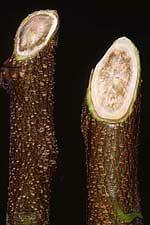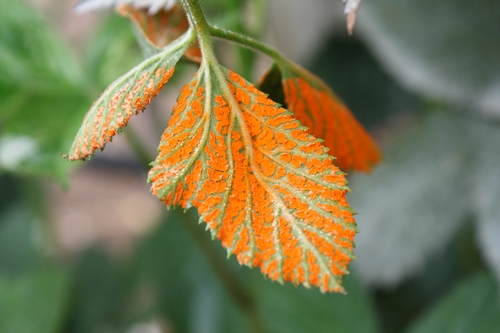Loganberry
Loganberry bushes, 3-6 feet tall and suitable for Zones 5-9, grow rapidly in well-drained soil under full sun to partial shade. Known for their hybrid berries, loganberries are a cross between blackberries and raspberries.
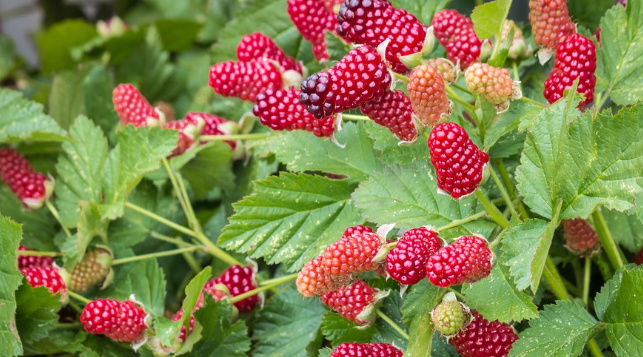
Habit
Shrub
Height
1.0 to 2.5 m
Growth
Fast
Soil
Well-drained, Sandy Loam
Shade
Full Sun to partial shade
Moisture
Moderate
Edible
Yes
Medicinal
Yes
Origin
USA
Climatic Condition
Subtropical, Temperate
Temperature (°)
15°C to 25°C
Humidity (%)
50% to 60%
Potting media
50% Loam, 40% Sand, 10% Compost
Fertilizers
Balanced Fertilizers
Watering
Regular watering
Plant Weight
2 to 4 kg
Flowering Time
Spring to Early Summer
Soil Ph level
6.0 to 7.5
Water Ph level
6.0 to 7.0
Soil EC
0.5 to 1.0 mS/cm
Yield Per Plant
5 to 8 kg per plant
NPK ratio
04:03:02
life Span
3 to 5 years
Health Benefits
High in Vitamin C, Antioxidant
Suggested Grow Media or Potting Mix ?
50% loamy soil, 30% compost, 20% sand
Suggested Fertigation/Fertilizers
Fertilize every 4 weeks with a balanced fertilizer.
Common Diseases and Remedies
Orange Rust , Verticillium Wilt .
Pustules are formed at the leaf surface and developed into the spore forming bodies. Drooping of the leaves fade to yellow to brown
Baking soda, lemon juice, Vineger.
HEALTH BENEFITS
High in vitamins C and A, supports immune health, and has antioxidant properties.
What Is An Loganberry ?
Logonberry is a hybrid berry. It was developed in the late 19th century by James Harvey Logan, a California judge and amateur horticulturist. Loganberry plants resemble blackberry bushes and produce elongated red-purple berries that are larger than raspberries and smaller than blackberries.
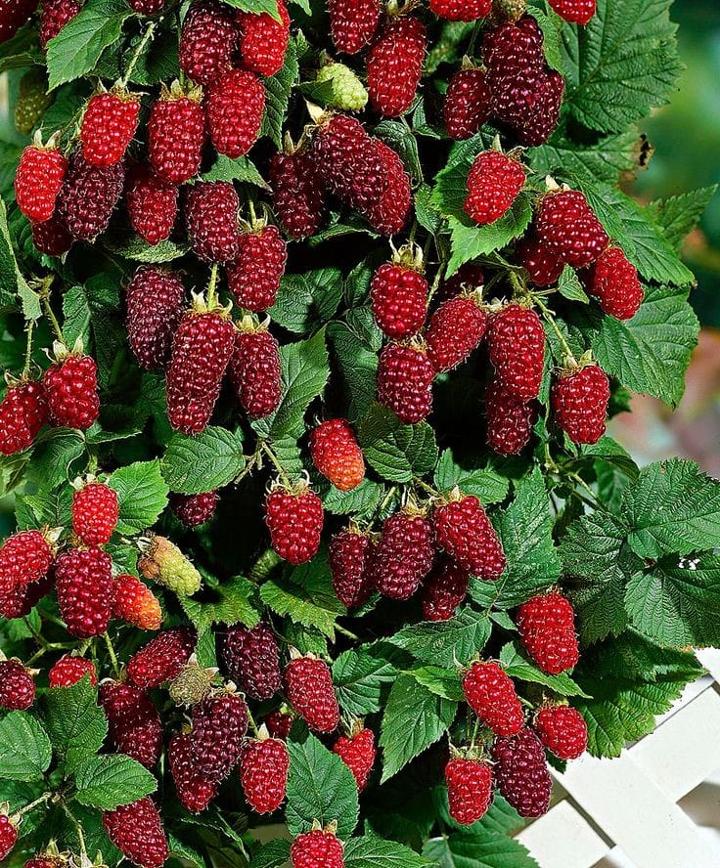
What Are The Different Types Of Loganberry ?
1. Logan
This is the original Loganberry variety developed by James His Harvey His Logan in the late 19th century. It has long, slender fruits that are reddish-purple with a sour taste, and is known for its vigorous growth.
2. Avalon Pride
This variety is prized for its disease resistance and early ripening fruit. It produces large fruit with a sweet and sour flavour, making it ideal for home gardens.
3. Ly59
Developed in New Zealand, this variety is known for its large, aromatic fruits and high yields. It grows vigorously and is suitable for commercial production.
4. Amigo
Amigo Logan Berry is known for its exceptional taste and sweetness. It produces large, juicy fruits with a unique flavour, making them popular for eating raw or for processing.
5. Marton Thornless
As the name suggests, this variety is thornless and easy to harvest. It produces medium-sized fruits with a rich, tangy flavour, making it ideal for home gardeners who prefer a more manageable plant.

How to Care Loganberry ?
1. Location
Loganberries prefer temperate climates with mild winters and mild summers. It can tolerate some frost, but can be damaged in areas of extreme cold or heat. The ideal growing temperature for loganberries is between 15°C and 27°C. Loganberry plants have a trailing habit and can benefit from a trellis or support structure that keeps the vines off the ground and promotes airflow.
2. Sunshine
Sunlight plays an important role in the growth and development of loganberry plants. Loganberries require plenty of sunlight to produce abundant fruit and maintain overall plant health. When choosing a location to grow loganberries, it is important to choose a location that is fully exposed to the sun. H. At least 6 to 8 hours of direct sunlight per day. Adequate sunlight also contributes to strong, vigorous growth and promotes the development of fragrant berries. In areas with cool climates, choose a sunny, sheltered location to maximize sun exposure.
3. Soil
Soil quality is critical to successful loganberry cultivation as it directly affects loganberry growth, health, and fruit production. Loganberries grow in well-drained soil that is rich in organic matter and has a slightly acidic to neutral pH. Sandy loam or clay soils are particularly suitable for loganberries because they drain well while retaining moisture and nutrients. Before planting loganberries, it is recommended to prepare the soil by incorporating organic materials such as compost, aged manure, and mulch.
4. Hydration
Proper hydration is critical to the health and productivity of loganberry plants. Loganberries, like many fruit-bearing plants, require consistent moisture throughout the growing season to support active growth and fruit development. Proper hydration allows roots to efficiently absorb nutrients from the soil and transport them to other parts of the plant. When watering loganberry plants, it is important to maintain a balance that prevents both underwatering and overwatering.
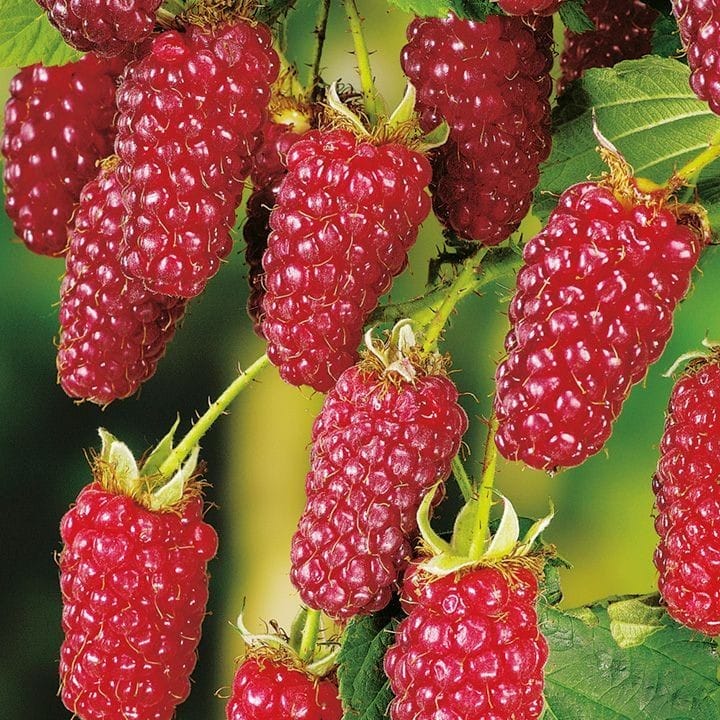
5. Nourishment
Proper hydration is critical to the health and productivity of loganberry plants. Loganberries, like many fruit-bearing plants, require consistent moisture throughout the growing season to support active growth and fruit development. Proper hydration allows roots to efficiently absorb nutrients from the soil and transport them to other parts of the plant. When watering loganberry plants, it's important to maintain a balance that prevents both underwatering and overwatering.
6. Issues
Loganberries may be susceptible to pests such as aphids, spider mites, and fruit flies. These pests can damage leaves, flowers, and fruit, impacting yield and overall plant health. Regular checks and immediate interventions such as: Treatments such as insecticidal soap and neem oil can help control pest numbers and minimize damage. Fungal diseases such as powdery mildew, anthracnose, and botrytis can affect loganberry plants, especially in damp or humid conditions.
What are the Benefits of Loganberries ?
Loganberries are rich in antioxidants such as vitamin C, anthocyanins, and phenolic compounds. These antioxidants neutralize harmful free radicals in the body, reduce oxidative stress and inflammation, and may reduce the risk of chronic diseases such as heart disease and cancer. The fiber found in loganberries supports digestive health by promoting regular bowel movements and preventing constipation. Fiber also acts as a prebiotic by feeding the beneficial bacteria in your gut and promoting a healthy microbiome. Some studies show that the antioxidants and fiber found in loganberries may support heart health by lowering LDL (bad) cholesterol levels, reducing inflammation, and improving blood vessel function. These effects may contribute to lower risk of heart disease and stroke. Loganberries have a relatively low glycemic index, which means they raise blood sugar levels more slowly and more consistently than high-glycemic foods. The fiber found in loganberries may also help regulate blood sugar levels and improve insulin sensitivity, which may be beneficial for people with diabetes or at risk of developing diabetes. Additionally, the antioxidants found in loganberries reduce inflammation and support overall immune health
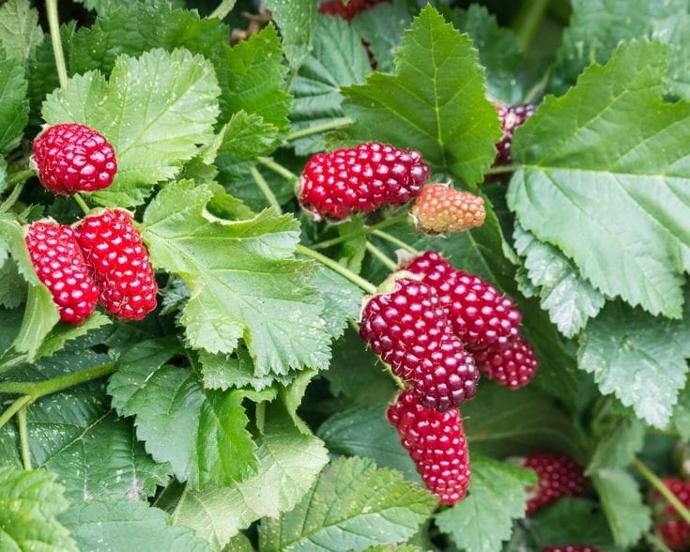
FAQs About Growing Loganberry
1. Are loganberries easy to grow ?
Loganberries are relatively easy to grow, especially in areas with mild climates. Although it requires regular care and maintenance such as pruning, watering, and fertilizing, it is a rewarding plant for home gardeners.
2. Can loganberries be grown in containers ?
Yes, loganberries can be grown in containers as long as the roots have enough space to grow and receive sufficient sunlight and water. Choose a large container with good drainage and use a trellis or support structure to help the vines climb.
3. Do loganberries have thorns ?
Some loganberry varieties have thorns and others are thornless. If thorns are a problem, consider choosing thornless varieties for your garden.
4. What are loganberries commonly used for ?
Loganberries are commonly used in jams, jellies, cakes, syrups, and sauces. It can also be used to prepare drinks such as smoothies, cocktails, and fruit waters.
5. What does loganberry taste like ?
Loganberries have a tart raspberry flavour with a hint of blackberry sweetness. It is often used in jams, jellies, cakes and other desserts.
